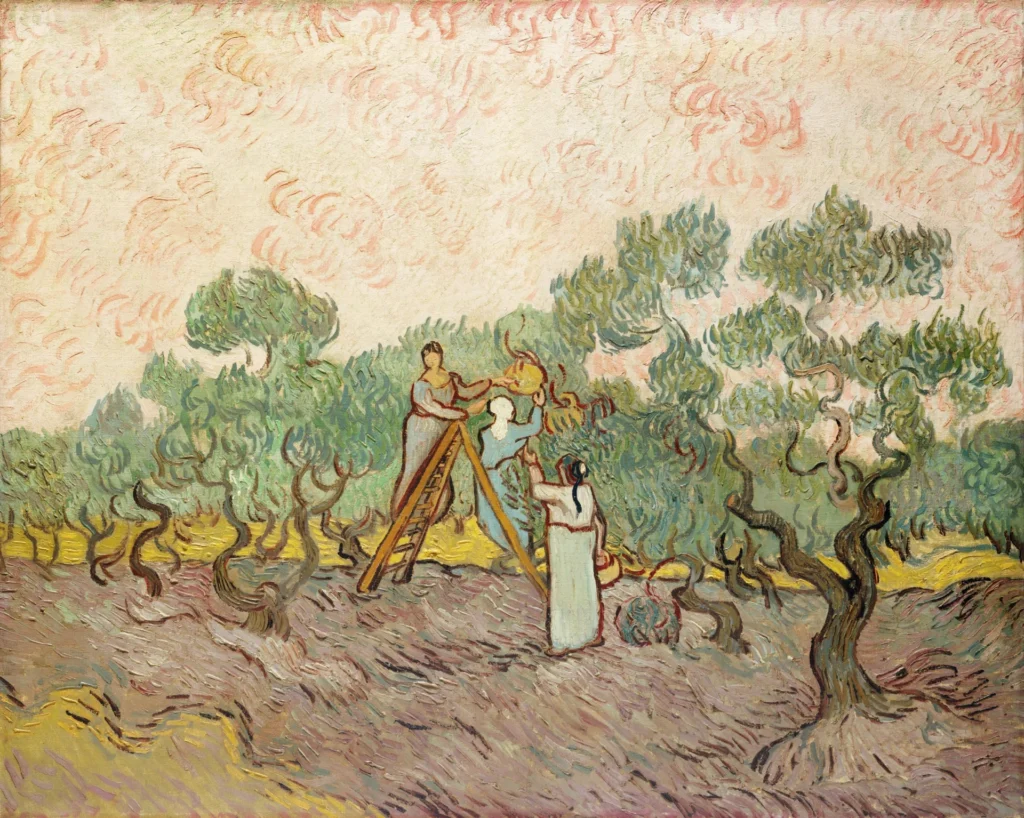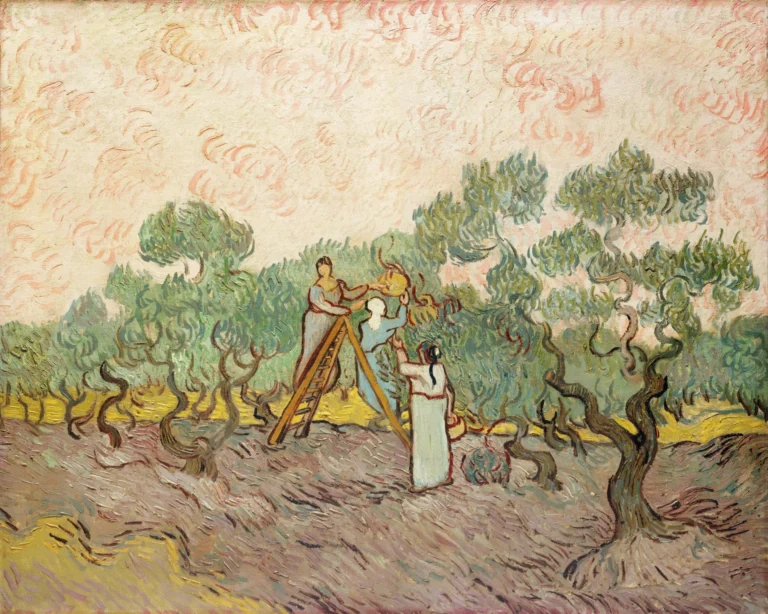Women Picking Olives (1889)
Created in December 1889, Women Picking Olives showcases Vincent van Gogh's fascination with rural life, depicting women engrossed in the labor of picking olives. The painting is notable for its vibrant colors and dynamic brushwork, characteristic of Van Gogh's post-Impressionist style. It exists in three versions: a study with solemn tones, a studio rendition held at the National Gallery of Art, and the most stylized version at The Metropolitan Museum of Art, highlighting Van Gogh's unique talent for reinterpreting a single scene in different ways.
December 1889
About the Artwork
Women Picking Olives is a poignant reflection of Van Gogh's emotional engagement with the rural environment. Created during a prolific period in his career, the painting embodies his deep admiration for the simple lives of laborers and their connection to the earth. Van Gogh painted this scene three times, each version representing his personal journeys and evolving artistic vision. The art reflects not just an aesthetic appreciation, but also a narrative of love, family ties, and the yearning for solace during turbulent times in the artist's life. The final version, crafted for his sister and mother, represents a tender act of sharing his world with those he cherished.
Did You Know
Liked what you see? Add it to your collection.
Enjoyed reading? Share it.
... continued
Multiple Versions
Van Gogh painted three versions of this scene. This was not unusual for him, as he often made multiple versions of paintings he was pleased with. These versions were sometimes intended for different recipients, such as his brother Theo for potential sale, or for his family members.
Description of Versions
- The first version was described by Van Gogh as a "study from nature more colored with more solemn tones" and is in a private collection.
- The second version, a studio rendition, features a "very discreet range" of colors and is housed at the National Gallery of Art in Washington, D.C.
- The third version, the most resolved and stylized, was intended for his sister and mother. This version is part of The Walter H. and Leonore Annenberg Collection at The Metropolitan Museum of Art in New York.
Context and Style
The painting depicts women picking olives in an olive grove, a scene that reflects Van Gogh's interest in capturing everyday rural life. The use of color and the stylized brushwork are characteristic of Van Gogh's post-Impressionist style.
Provenance
The version at The Metropolitan Museum of Art was a gift from Walter H. and Leonore Annenberg in 1995 and became part of the museum's collection through the bequest of Walter H. Annenberg in 2002.










